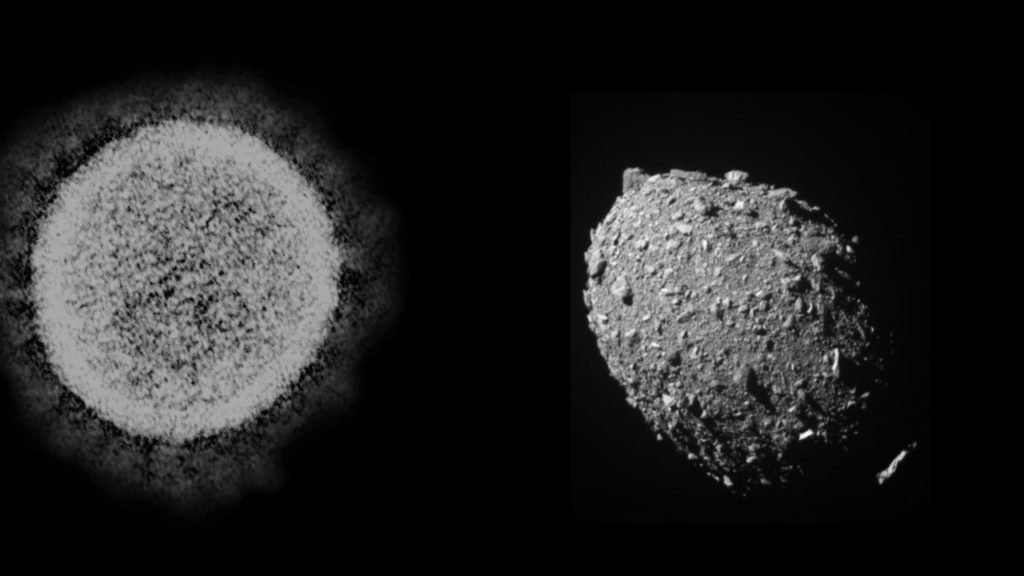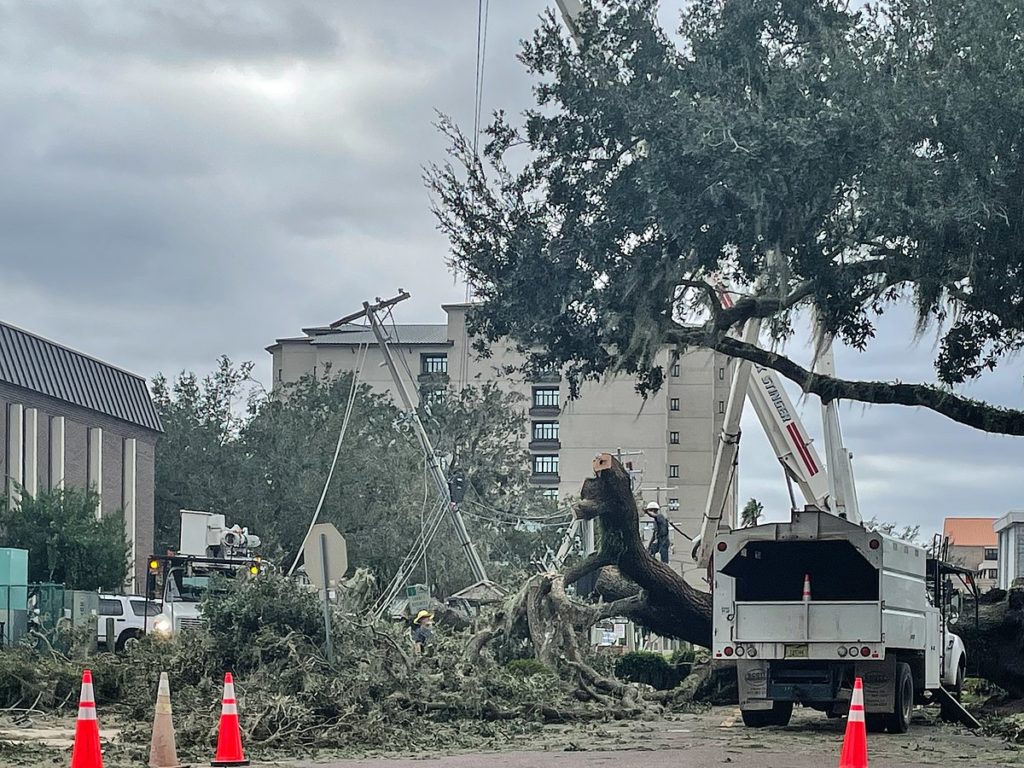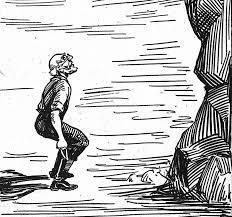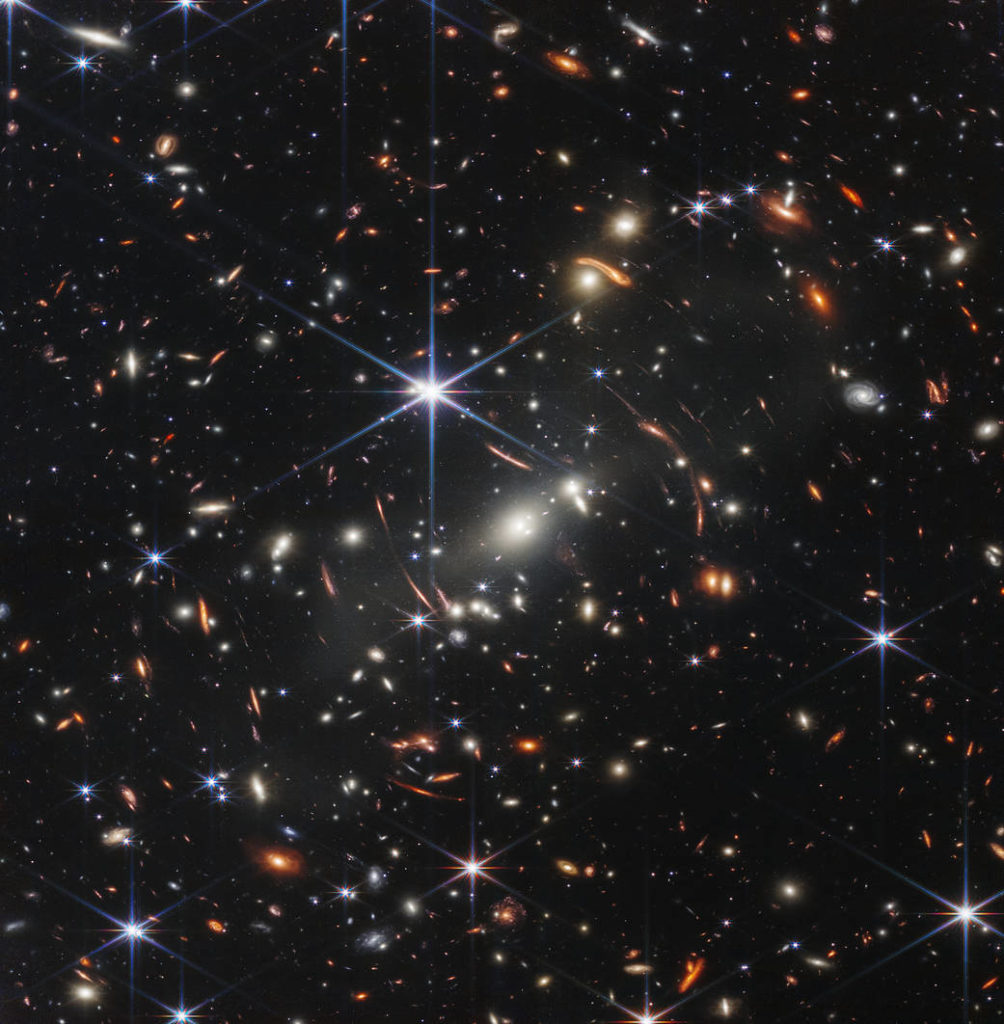The previous LOTRW post, focusing on the recent Supreme Court ruling in West Virginia v. the Environmental Protection Agency, occasioned a bit of comment, not on the blog site directly, but rather through e-mail and on community platforms.
At one end of the spectrum, a reader saw the EPA action as “a clear case of Administrative overreach.”
Other readers saw things from the other direction.
Stephen Jascourt provided a wonderfully thoughtful, extended and wide-ranging analysis. I asked and received his permission to reprint his thoughts verbatim. He assented; you’ll find his full post here. He had some significant disagreements with what I wrote; you’ll find his main points and supporting arguments compelling. He was also gentle, polite, perhaps to a fault – as you’ll see immediately from his opening:
Dear Bill,
I know you have deep understanding of the slow and interlocking mechanisms of society and our three branches of government, but I think you sort of went off the deep end to find a silver lining in this cloud of a Supreme Court decision.
Your thesis is entirely correct and obvious, that the decision is a result of inaction by Congress. This is not an uncommon situation – Congress does not act and the Court decides either that existing vague law can apply or cannot apply to a situation in front of the Court.
[Then he opens up a bit…]
But beyond that is where I see an entirely different understanding of the dynamic.
To start with, the Kagan opinion clearly states that Congress did NOT need to act further, that the law as it exists now IS applicable to the situation at hand. The majority opinion is a major turn of the way in which the Supreme Court interprets Congressional intent and the laws as they stand. Laws are made vague in this manner for two reasons: 1. future developments that are not imagined at the time the law is passed need to be either included or not included in the scope of the law, which is largely the issue in this case, and 2. compromise in the lawmaking process results in things being made less explicit so that one side can claim that it is supportable and vote for it or be willing to not stand in the way, things that lawmakers know are right to do but don’t want the messaging coming out in a particular way that they voted for X while their support base does not support position X. The new Court argument can and probably will be used to narrow the scope of applicability of many laws that protect us and our environment and our societal systems. Matters that many in Congress believed were settled in existing legislation will suddenly be declared beyond the scope of existing law.
[Then he hits full stride… 🙂]
But that’s relatively minor detail compared to the broader dynamic at play.
Your claim that “No one is happy or complacent about this…. It holds regardless of political persuasion” is definitely not true. Corporate right wing (petroleum PACs, tobacco companies and their PACs, etc.), Koch brothers, etc. have been pouring money into politics to have their interests take control and the restricting of scope of legislation is one of their top priorities because it is how they can weasel out of responsibility and increase their profits while reducing their legal risks. And to help promote their agenda, they have advertising campaigns, they buy off legislators – which creates part of the dysfunction in Congress, and they convince people of their message via “grasstops” campaigns in order to amplify their voice or position and make it appear more popular or make it actually more popular in an uninformed populace and to help garner voter support for the candidates who will do their bidding. This is a long-term strategy that underlaid the Reagan rhetoric focused on less regulation, less government, and lower taxes in order to starve government that has been the rallying cry of the Republican Party my entire life. The reasoning behind this decision and the power to implement this reasoning (of narrowed scope of laws) by having a majority on the Court who support it is the result of this long term strategy and is clearly supported by those behind that strategy. They are rejoicing over this. The dysfunction of Congress intentionally created by this strategy and the argument that this dysfunction can be used to limit regulation is all part of this strategy. There are many who are surely rejoicing now because their decades of effort to reduce corporate accountability and risk has been achieved in this case and may be achieved more broadly as more decisions are rendered based on the same reasoning.
Your claim “High-minded, intelligent, thoughtful, dedicated men and women populate, even dominate the chambers of the Supreme Court, the halls of Congress, the headquarters and field offices of the agencies” is only partly (mostly) true and the (smaller) part that is not plays an outsized and pivotal role. You cannot honestly say after January 6, 2021 that Ted Cruz or Josh Hawley or any of their staffers who still work for them are dedicated to preserving the United States constitutional system of government and transfer of power. You cannot look in the mirror and honestly say that. And that is just the most obvious example. There certainly are and always have been many “high-minded, intelligent, thoughtful, dedicated men and women” of differing viewpoints and who may often not be able to agree on some matters, but when you put sand into the gears of the democratic machinery as we have allowed to happen by voting for people like Cruz and Hawley, it undermines the already intentionally slow and self-limiting functioning of Congress. And, turning to the executive branch, many of the Trump agency appointees clearly were not “high-minded, intelligent, thoughtful, and dedicated.”
Same for Reagan’s. The civil servants serving under them were hamstrung by orders from the appointed leadership. You can see this by the history, by the convictions, by the lies that have become exposed, by the manipulations, by the conflicts of interest and abuses of power that have been widely reported. But these appointees had the power to push government in a certain direction, and they were allowed that power by confirmation by a majority of Senators, most of that majority confirmed because they supported the agenda of the nominees and placed that agenda ahead of integrity, and some of whom confirmed because they incorrectly assumed positive intent, competence, and dedication of purpose to the public good even if they disagreed with the nominee politically. And some Senators voted to confirm some nominees whom they normally wouldn’t have in order to “pick their battles” to focus their political capital against a few even more egregious nominations.
[And shows mercy at the end…]
In conclusion, your painting of the decision as a cloud and painting a considerable silver lining in that cloud I think is not a realistic painting. Instead, I view the cloud as the way our government and society functions that has allowed things to reach a point where such a decision was possible and the decision is simply a byproduct, the rain from that cloud. Rain of course is part of the cycle of life and rejuvenation, and there is much work to do to claim or reclaim our democracy. And I would guess we are in agreement on that conclusion! 🙂 At least if I keep it that vague. Once we start talking about exactly what is involved in claiming or reclaiming our democracy, we might find some more points where we disagree, but probably many where we do agree, and working through those is the essence of democracy itself.
Best regards,
Stephen Jascourt
Thanks again, Stephen, for contributing to the discussion in this way.
By way of defense, I’ll simply note that Stephen’s response exemplifies the promise of my favorite Charles Darwin’s quote, which had appeared on the LOTRW masthead for many years (only just today noticed it’s no longer there; now puzzling as to why, and how to restore it): “False facts are highly injurious to the progress of science, for they often endure long; false views, if supported by some evidence, do little harm, for everyone takes a salutary pleasure in proving their falseness.”
Certainly I have no quarrel with what Stephen has to say; I can only admire it.
But what he has to say is itself stimulating in Darwin’s sense. Stephen recognizes this. In his followup correspondence, he asked that I correct a few typos (have tried my best). He went further:
I am a bit concerned that I made some sweeping assertions that I can support but would take many more pages of text and looking up citations etc. to support which is more work than I have time for and would go beyond the bounds of your blog. My concern is that supporting those assertions would be required for any scholarly debate or publication, and those smart people who want to challenge my assertions would probably use that lack of rigor as a hitting point.
He has stumbled on the blogger’s lament! I worry about this with every post. The problem is aggravated by the artificial deadline I give myself for every post, in an attempt to keep thoughts timely versus polish them incessantly.
Two closing comments, prompted by Stephen’s inputs, but more along the lines of that’s what I meant to say, or that’s what I should have said:
First, Stephen noted in particular that my claim that “No one is happy or complacent about this…. It holds regardless of political persuasion” is definitely not true. He adds supporting material to make this point clear.
I intended to convey a different meaning, but failed to express it well. It’s this: Stephen and I are frustrated/disappointed in the Court’s decision. We’re both unhappy with that result. But I don’t think those on the other side, though “happy” with the victory, as Stephen notes, are happy in any deeper sense. They’re exhausted by the fight they’ve been in. They’re all too conscious of the price they paid, not just in dollars but in making upcoming battles even more difficult. They’re smart enough to recognize that they may have “won” this battle, but they’re losing a larger war. At best they’re buying time. In the end they’ll lose out to inexorable realities: global change itself; growing awareness of the human causes; increased public understanding of what will be needed to restore things.
Second, Stephen notes that a minority of people who are not high-minded are playing an outsized political role. But my point is that the majority of that group are not setting out to turn the planet into a dumpsite, or destroy American values. The tragedy of Washington is that it’s populated by half a million people who were raised by mom and dad to make the world a better place, but they come to DC and instead of seeing themselves part of a 500,000-strong support group, they think they’re the only ones. They wake up every morning and instead of seeing the day as a chance to seek truth and solve problems together, they think it’s necessary to do battle. It’s only a minority of the minority who are actively, eagerly, consciously trying to do the rest of us in versus save us.
This is not a new phenomenon. The prophet Jeremiah laments (Jer. 17:9 NIV): The heart is deceitful above all things and beyond cure. Who can understand it? The lament is not that we deceive others. We deceive ourselves first. Perhaps Jeremiah was thinking of even old literature, this from Proverbs 21:2: A person may think their own ways are right, but the LORD weighs the heart. Whatever our side, we we’re in the right. This thinking was already familiar to the human heart before being codified by Middle East thinkers thousands of years ago. (Much) more recently, in his second Inaugural Address, Lincoln made a similar observation about the sides in the Civil War: Both read the same Bible and pray to the same God and each invokes His aid against the other. Interestingly, Lincoln was just as mystified then as we are with respect to the present West Virginia v. Environmental Protection Agency decision. Lincoln went on to say: It may seem strange that any men should dare to ask a just God’s assistance in wringing their bread from the sweat of other men’s faces but let us judge not that we be not judged. The prayers of both could not be answered – that of neither has been answered fully. The Almighty has His own purposes.
There’s very little joy in approaches to conflict resolution that start with trying to convince the other side they’re in the wrong. The starting point is to build the trust needed to bridge differences, find compromise, and solve problems. Stephen Jascourt modeled that behavior in his approach to both the blogpost and the larger issue. For that:
Thanks, again, Stephen!






